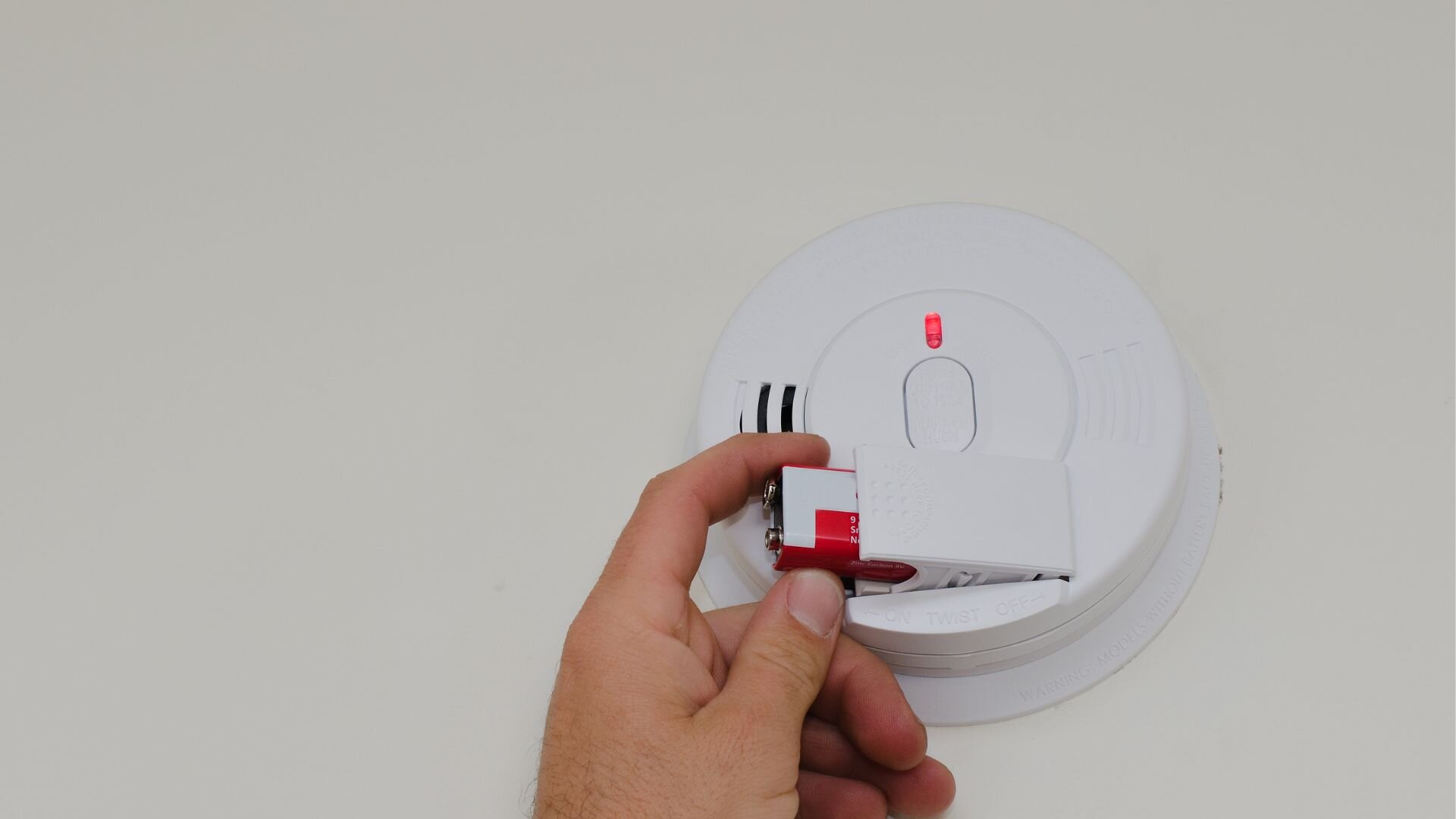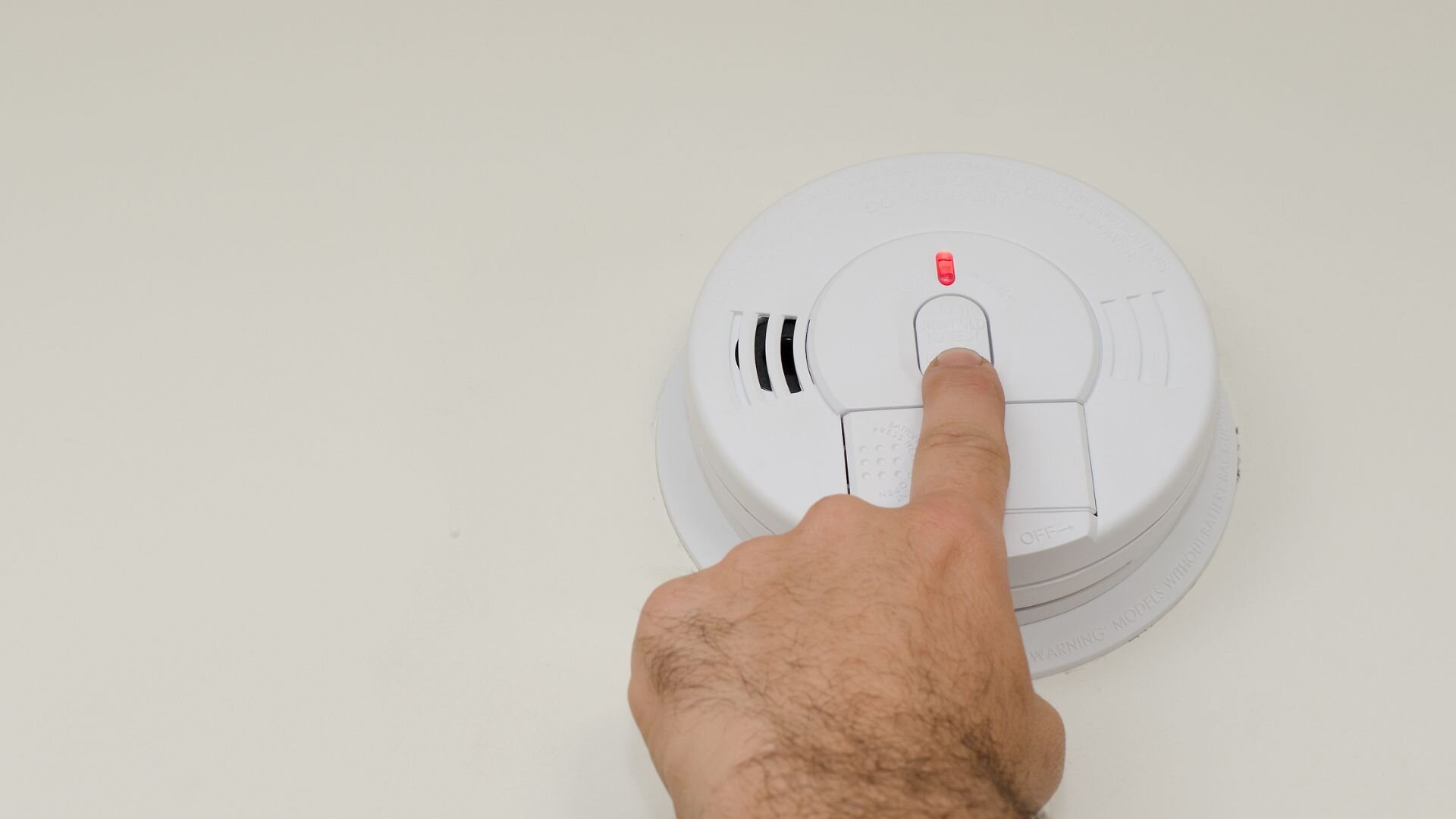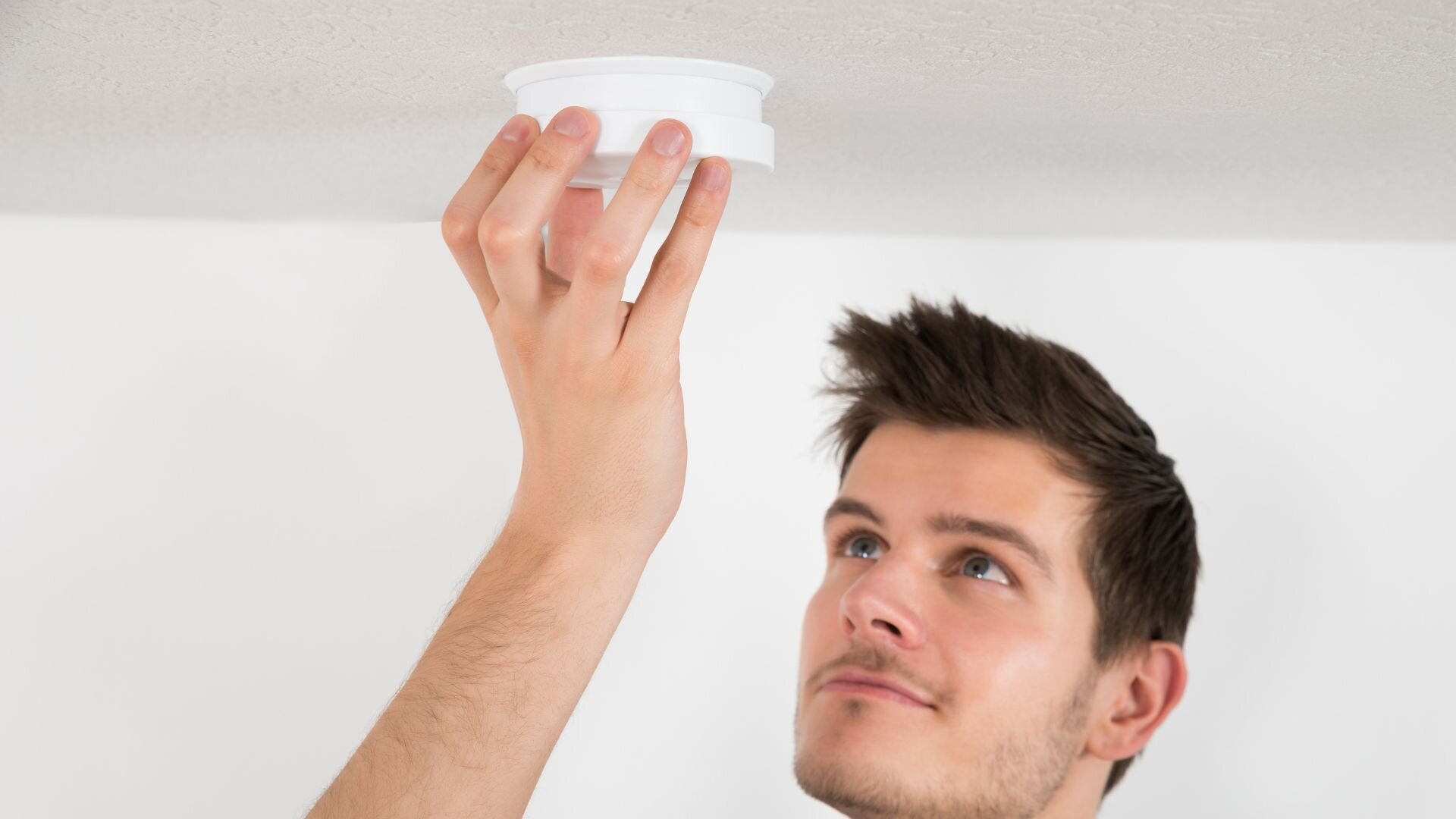Smoke alarms are a crucial component of home safety in Australia. They provide early warning in a fire, giving you and your family time to evacuate and potentially saving lives. In fact, according to Fire and Rescue NSW, having working smoke alarms in your home can reduce the risk of fatality in a fire by up to 60%.
At Enersol, our Residential Electrician Gold Coast - Just putting smoke alarms in your home doesn’t guarantee safety. To keep them dependable, you need to regularly maintain and clean them. Here in Australia, you should clean your smoke alarms every six months to prevent dust and debris from causing any issues. This helps reduce false alarms and ensures they pick up real smoke effectively.
In this article, we’ll cover essential maintenance tasks to keep your smoke alarms in good working order. Learn more about residential wiring guide. This includes monthly testing, annual battery changes, and cleaning every six months. We’ll also look at why it’s vital to replace your alarms every ten years and explore special considerations for interconnected and various types of alarms found in Australian homes.
By sticking to these simple maintenance routines, you’ll have peace of mind knowing your smoke alarms are ready to protect your family if a fire ever happens.
Regularly Test Your Smoke Alarms
Testing your smoke alarms monthly is a crucial part of maintaining their effectiveness. Regular testing ensures the alarms are working correctly and the batteries are not depleted. In Australia, it is recommended that you test your smoke alarms once a month to ensure they are in proper working order.
To test your smoke alarm, follow these simple steps:
- Inform your family members that you will test the smoke alarms to avoid causing unnecessary false alarms.
- Locate the test button on the smoke alarm. It is usually found on the front or side of the device.
- Press and hold the test button for a few seconds. The alarm should sound like a loud, piercing siren.
- If the alarm sounds, release the button and wait for it to stop. Your smoke alarm is working correctly.
- If the alarm does not sound or produces a weak sound, immediately replace the smoke alarm batteries and test again.
- Repeat the process for all smoke alarms in your home, including those in bedrooms, hallways, and living areas.
If the smoke detector still doesn’t sound after replacing the batteries, it may be inaccurate or have reached the end of its lifespan. In this case, replace the smoke alarm immediately to ensure your home remains protected.
It’s a good idea to involve your family members, especially children, in the testing process. This helps them become familiar with the sound of the smoke alarm and reinforces the importance of fire safety in the home.
Besides monthly checks, make sure to test your smoke alarms if you’ve been away for a while, like after a holiday, just to confirm they’re still in good working order.
Remember, a working smoke alarm can mean the difference between life and death in the event of a fire. By regularly testing your smoke alarms, you can have peace of mind knowing that your home and family are protected.
To keep your smoke alarm working efficiently, clean it with a vacuum cleaner every few months.
Replace Batteries Annually
Replacing the batteries in your smoke alarms at least once a year is essential to ensure they remain operational and effective. Even if your smoke alarms are hardwired to your home’s electrical system, they likely have backup batteries that must be replaced annually.
In Australia, it’s wise to change your smoke alarm batteries once a year, even if they’re not beeping to warn of low power. This proactive move ensures your alarms are always primed to alert you in case of fire.
To help you remember to replace your smoke alarm batteries, choose a specific date or holiday that is easy to remember. For example, many Australian fire departments recommend replacing smoke alarm batteries on April 1st, known as "April Fool’s Day." By linking the task to a specific date, you are more likely to remember to do it annually.

When replacing batteries, refer to your smoke alarm’s user manual for specific instructions, as the process may vary slightly depending on the model and type of smoke alarm you have. Generally, follow these steps:
- Remove the smoke alarm from its mounting bracket by gently twisting it counterclockwise.
- Locate the battery compartment and open it. To do so, you may need to slide or press a tab to release the cover.
- Remove the old batteries and dispose of them properly. Always replace all batteries at the same time to ensure consistent performance.
- Insert new batteries, ensuring they are facing the correct direction. Most smoke alarms use 9-volt or AA batteries.
- Close the battery compartment and reattach the smoke alarm to its mounting bracket by twisting it clockwise until it locks.
- Test the smoke alarm by pressing the test button to ensure it works correctly with the new batteries.
For hardwired smoke alarms, you might need to switch off the power to the alarm circuit at your home’s electrical panel before changing backup batteries. Always follow the manufacturer’s guidance and be cautious when dealing with electrical systems.
Switching out your smoke alarm batteries every year is a minor task but plays a big role in keeping your family safe. By making sure your smoke alarms are always powered and ready, you can relax knowing they’ll alert you if there’s a fire.
How to Clean Your Smoke Alarms
Follow these step-by-step instructions to clean your smoke alarms:

Step 1: Remove the Alarm from Its Mounting Bracket
Gently twist the smoke alarm counterclockwise to remove it from its mounting bracket. If the alarm is hardwired, be cautious not to disconnect any wires.
Step 2: Use a Vacuum Cleaner with a Soft Brush Attachment
Grab a vacuum cleaner with a soft brush attachment to gently sweep away dust and debris from your smoke alarm’s vents and surface. Focus on the sensing chamber where smoke particles get picked up. If there’s a removable cover, take it off carefully and give the inside a good vacuum too.
Step 3: Wipe the Exterior with a Damp Cloth
Use a slightly damp cloth to wipe the exterior of the smoke alarm, removing any remaining dust or dirt. Be sure to wring out the cloth well to avoid getting water inside the smoke alarm. Do not use cleaning products or solvents, which can damage the smoke alarm’s components.
Step 4: Reattach the Smoke Alarm
Once the smoke alarm is clean and dry, reattach it to its mounting bracket by twisting it clockwise until it locks. If the alarm is hardwired, ensure that all wires are securely connected.
Step 5: Test the Smoke Alarm
After cleaning, always test the smoke alarm to ensure it works correctly. Press the test button and wait for the loud, piercing siren to sound.
Caution: Avoid Using Cleaning Products or Solvents
Avoid using cleaning products, solvents, or sprays when cleaning your smoke alarms. These substances can damage the smoke alarm’s sensitive components and may cause the device to malfunction. Use a vacuum cleaner with a soft brush attachment and a slightly damp cloth for the best results.
Giving your smoke alarms a clean every six months keeps them in top shape and cuts down on false alarms. It’s a simple job that helps keep your home and family safe if a fire ever happens.
Replace Smoke Alarms Every Ten Years
Just like any electronic device, smoke alarms don’t last forever and should be replaced every ten years. Even if they seem to work fine, their sensitivity and reliability can decrease with age. That’s why it’s crucial to replace them once they hit the ten-year mark to keep your home and family well protected.
To determine the age of your smoke alarm, check the manufacturer’s date on the back of the device. This date is typically printed on a label or stamped directly onto the plastic casing. If you can’t find a date or the alarm is older than ten years, it’s best to replace it immediately. Keeping a record of when your smoke alarms were installed can also help you keep track of their age and know when it’s time to replace them.
Interconnected Smoke Alarms
Interconnected smoke alarms are a valuable addition to any home fire safety plan. These alarms are wirelessly connected or hardwired together, allowing them to communicate with each other. When one alarm detects smoke, it triggers all the other alarms in the system to sound simultaneously. This ensures that everyone in the home is alerted to the danger, regardless of where the fire starts or where they are.
The main benefit of interconnected smoke alarms is that they provide an early warning system throughout the entire home. This is particularly important in larger homes or people who sleep on different levels or in separate areas. By alerting everyone simultaneously, interconnected smoke alarms can give your family more time to evacuate safely and call for emergency assistance.
Special Considerations for Different Types of Smoke Alarms
When maintaining and cleaning your smoke alarms, it’s essential to understand the different types of alarms available and any special considerations they may require. The two main types of smoke alarms are ionisation and photoelectric alarms. Ionisation smoke alarms are more sensitive to flaming fires, while photoelectric alarms are more responsive to smouldering fires. Having both types of alarms in your home is recommended for optimal protection.
Hardwired smoke alarms are connected to your home’s electrical system and typically have a backup battery in case of power outages. These alarms require professional installation and may need to be maintained differently than battery-operated alarms. When replacing batteries in hardwired alarms, follow the manufacturer’s instructions and turn off the power to the alarm circuit at your home’s electrical panel before proceeding.

On the other hand, battery-operated smoke alarms rely solely on batteries for power. These alarms are easier to install and maintain, but replacing the batteries annually and testing them monthly is crucial to ensure they work correctly.
Combination smoke and carbon monoxide alarms are becoming increasingly popular in homes. These alarms detect smoke and carbon monoxide, providing comprehensive protection against two deadly household hazards. When maintaining combination alarms, follow the manufacturer’s instructions carefully, as the process may differ slightly from standard smoke alarms.
Regardless of the type of smoke alarm in your home, regular maintenance and cleaning are essential to keep it in proper working order. To ensure optimal performance, test your alarms monthly, replace batteries annually, and clean them every six months. If you have questions about maintaining a specific type of smoke alarm, consult the manufacturer’s instructions or contact a professional fire safety expert for guidance.
Maintenance To Keep Your Fire Safe!
Maintaining and cleaning your smoke alarms is a simple but essential task that can help keep your home and family safe in the event of a fire. By testing your alarms monthly, replacing batteries annually, cleaning them every six months, and replacing them every ten years, you can ensure that your smoke alarms are always ready to alert you to potential dangers.
Remember to pay special attention to interconnected smoke alarms, as they require all alarms in the system to be replaced simultaneously to ensure proper communication and effectiveness. Explore our Residential Electrician Gold Coast to learn more.
If you need assistance installing, maintaining, or replacing your smoke alarms in the Sydney area, consider contacting Enersol Electrical. Our experienced, licensed electrician team can help ensure your smoke alarms are installed correctly and functioning optimally.
We can also guide you through the process, help you choose the best for your home, and assist with regular maintenance tasks to keep your alarms in the norm. Contact Enersol Electrical today to schedule a consultation and learn how we can help you maintain a safe and secure home.